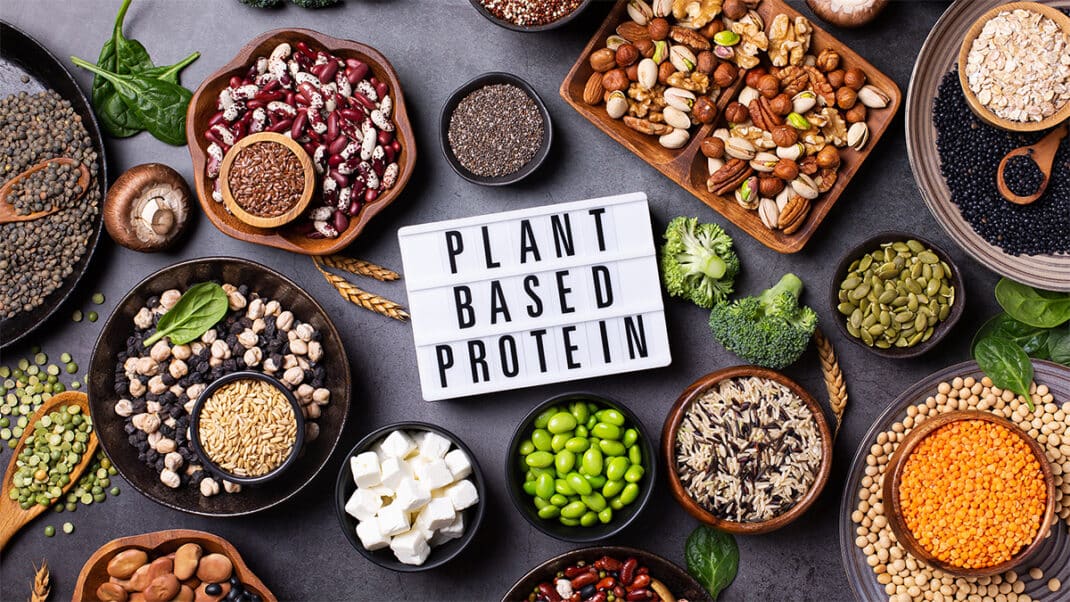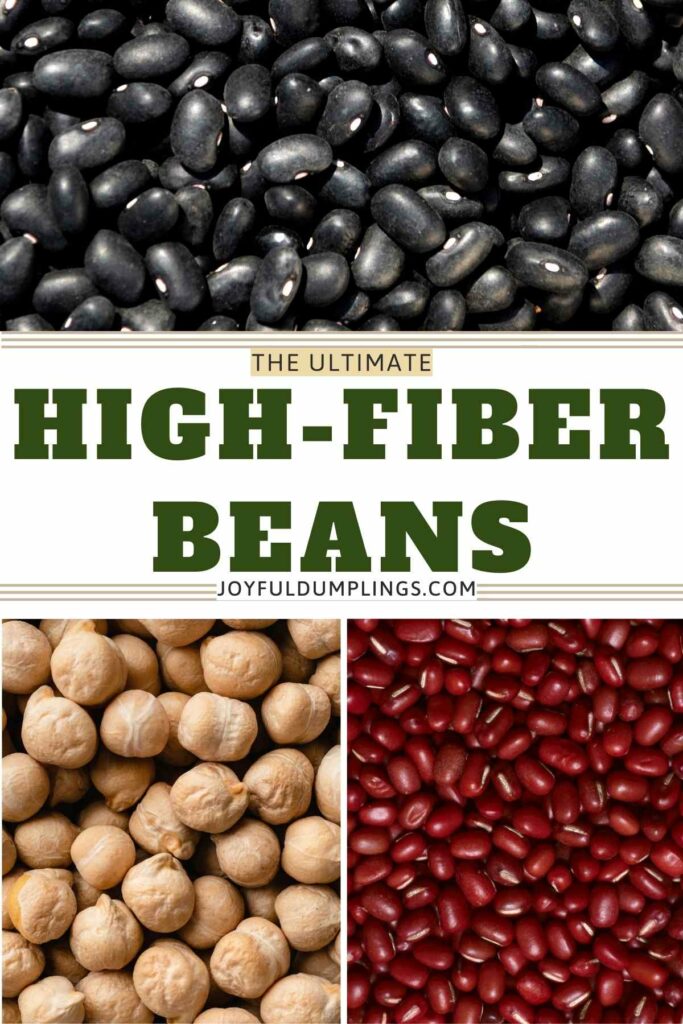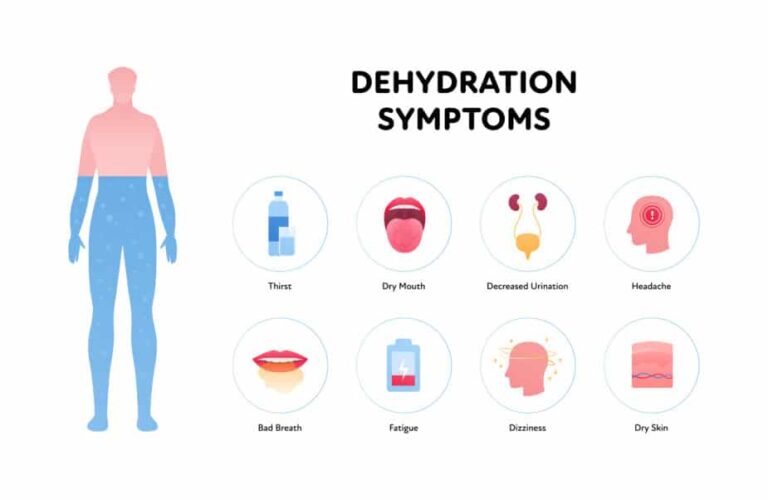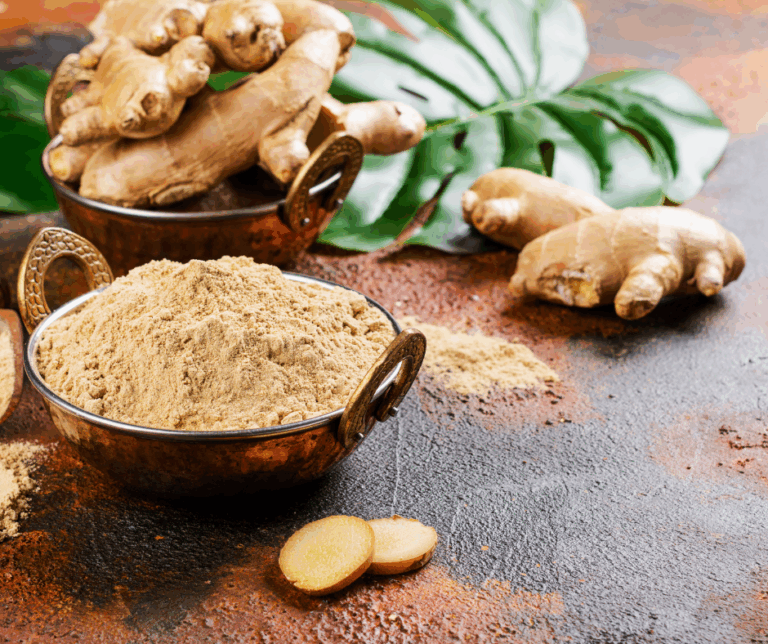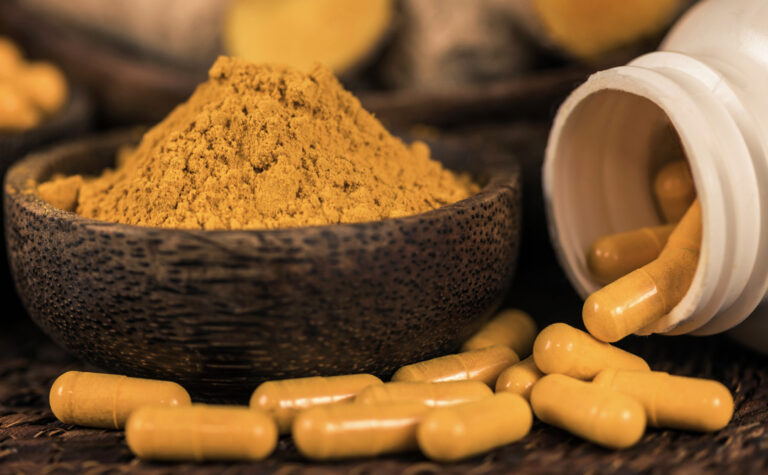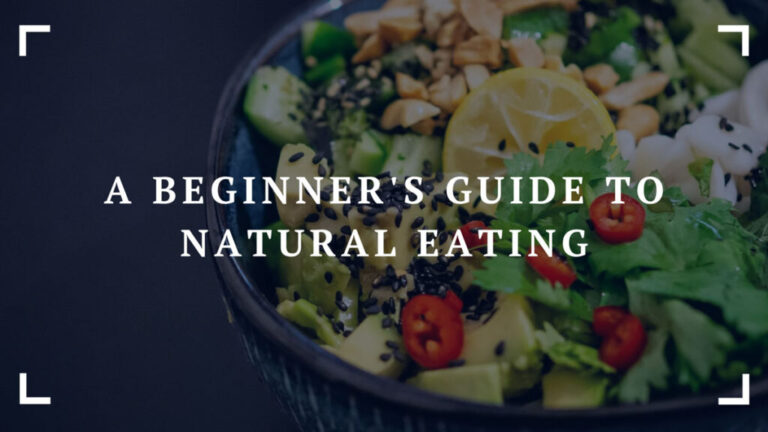The Unsung Revolution: High-Fiber Beans – The True Secret to Affordable Plant-Based Protein
In an era increasingly defined by the search for sustainable, ethical, and health-conscious food choices, the plant-based movement has exploded. From sleek vegan cafes to innovative lab-grown meats, the options seem endless. Yet, amidst this culinary revolution, a quiet, ancient powerhouse often remains relegated to the sidelines, its true potential overlooked: the humble, high-fiber bean.
This isn’t just a story about food; it’s a narrative of rediscovery, a testament to resilience, and an urgent call to embrace a dietary cornerstone that holds the secret to affordable protein, unparalleled fiber, and a healthier planet. For the knowledgeable palate and the discerning mind, the journey into the world of beans reveals not just sustenance, but profound wisdom.
The Modern Protein Predicament: Cost, Conscience, and the Quest for Sustainability
Our modern world grapples with a complex protein predicament. As the global population swells, so too does the demand for protein, traditionally sourced predominantly from animal agriculture. This reliance comes at a significant cost – not just to our wallets, but to the environment. The ecological footprint of meat production, encompassing vast land use, prodigious water consumption, and substantial greenhouse gas emissions, is well-documented and increasingly unsustainable.
This reality has fueled a surge in plant-based eating. Whether driven by ethical considerations, environmental concerns, or personal health goals, millions are seeking alternatives. However, the path to plant-based protein can often be fraught with its own challenges. Many of the celebrated plant-based meat alternatives, while innovative, come with a premium price tag, placing them out of reach for a significant portion of the population. Specialty vegan products, too, can strain household budgets. The question then arises: how can one embrace a plant-forward diet that is both nourishing and economically viable for everyone, not just the privileged few?
The answer, as it often is, lies in simplicity, in tradition, and in the wisdom of our ancestors. The answer, my friends, is beans.
Beyond the Buzzwords: The Dual Powerhouse of Protein and Fiber
When we talk about beans, we must transcend the simplistic label of "protein source." While their protein content is indeed remarkable and often comparable to or exceeding that of many meats per calorie, their true magic lies in their dual identity: they are simultaneously a potent source of high-quality protein and an unparalleled reservoir of dietary fiber. This combination is what elevates beans from a mere ingredient to a nutritional superpower.
For the knowledgeable audience, the distinction is crucial. Protein is essential for muscle repair, enzyme production, and countless bodily functions. Fiber, on the other hand, often gets less fanfare, but its role in human health is nothing short of foundational. Most Western diets are woefully deficient in fiber, with average intakes falling far below recommended levels. This deficiency contributes to a litany of modern ailments, from digestive issues and unstable blood sugar to elevated cholesterol and an increased risk of chronic diseases.
Beans offer a symphony of both soluble and insoluble fiber. Soluble fiber dissolves in water, forming a gel-like substance that helps lower cholesterol and glucose levels. It’s the reason you feel full and satisfied after a bean-rich meal, as it slows digestion. Insoluble fiber, the roughage, adds bulk to stool, promoting regular bowel movements and preventing constipation. More profoundly, both types of fiber act as prebiotics, nourishing the beneficial bacteria in our gut microbiome. This internal ecosystem, increasingly recognized as our "second brain," influences everything from immunity and nutrient absorption to mood and metabolic health. By feeding our microbiome with the complex carbohydrates and fibers in beans, we are investing in a holistic well-being that extends far beyond simple caloric intake.
The synergy between protein and fiber in beans creates a metabolic marvel. The protein provides sustained energy and satiety, while the fiber moderates blood sugar response, preventing the sharp spikes and crashes often associated with simpler carbohydrates. This makes beans an ideal food for managing weight, stabilizing energy levels, and fostering long-term metabolic health.
A Culinary Odyssey: The Ancient Story of Beans
To truly appreciate the bean, we must embark on a journey through time, tracing its footsteps across continents and civilizations. Beans are not a new trend; they are an ancient cornerstone of human survival and culture, a testament to their enduring value.
Archaeological evidence suggests that beans were among the earliest domesticated crops, alongside grains, dating back thousands of years. In the Americas, legumes like common beans (Phaseolus vulgaris), lima beans, and tepary beans were cultivated as early as 7,000 years ago, forming a critical component of the "Three Sisters" agricultural system with corn and squash. This ingenious polyculture not only provided balanced nutrition but also enhanced soil fertility, as beans, through their symbiotic relationship with nitrogen-fixing bacteria, enriched the soil with vital nutrients.
Across the Atlantic, lentils and chickpeas were staples in the Fertile Crescent and ancient Egypt. Fava beans (broad beans) were revered in ancient Greece and Rome, providing sustenance for soldiers and citizens alike. In Asia, soybeans, adzuki beans, and mung beans became foundational to diverse culinary traditions, from fermented products like tofu and tempeh to rich curries and comforting soups.
This global prevalence isn’t accidental. Beans are remarkably adaptable, capable of thriving in various climates and soil conditions. They are also incredibly shelf-stable when dried, making them a reliable food source during lean times and long journeys. For millennia, they have been the literal backbone of diets for countless cultures, providing essential nutrition where animal protein was scarce or unaffordable. This rich history imbues the bean with a profound sense of heritage and resilience, a narrative that resonates deeply with those who seek food that is both nourishing and culturally significant.
The Science of Simplicity: Unpacking the Bean’s Nutritional Profile
For the knowledgeable consumer, a deeper dive into the bean’s nutritional architecture reveals its genius. Beyond protein and fiber, beans are micronutrient powerhouses, often providing nutrients that are either scarce or less bioavailable in other plant sources.
Let’s consider the breakdown:
- Protein: While often termed "incomplete" proteins due to their lower levels of one or two essential amino acids (methionine and tryptophan for most legumes), this outdated concept has largely been debunked. The human body maintains an "amino acid pool," and by consuming a varied diet throughout the day – perhaps beans with a grain like rice or corn, or even just different types of beans – one easily obtains all essential amino acids. The protein quality of beans, when consumed as part of a varied diet, is excellent.
- Complex Carbohydrates: Beans are rich in slow-digesting complex carbohydrates, providing a steady release of energy and contributing to their low glycemic index. This is crucial for sustained energy and blood sugar management, particularly beneficial for individuals with diabetes or those seeking to avoid energy crashes.
- Folate: An often-overlooked B vitamin, folate is critical for DNA synthesis and repair, cell growth, and red blood cell formation. Beans are among the richest plant sources of folate, vital for women of childbearing age and overall cardiovascular health.
- Iron: While plant-based iron (non-heme iron) is less readily absorbed than heme iron from animal sources, beans are an excellent source. Pairing beans with vitamin C-rich foods (like tomatoes, bell peppers, or citrus) significantly enhances iron absorption.
- Magnesium: Essential for over 300 enzymatic reactions in the body, magnesium supports muscle and nerve function, blood glucose control, and blood pressure regulation. Many individuals are deficient in this vital mineral, and beans provide a substantial contribution.
- Potassium: Crucial for maintaining fluid balance, nerve signals, and muscle contractions, potassium is abundant in beans, supporting healthy blood pressure.
- Zinc: Important for immune function, wound healing, and DNA synthesis, zinc is another key mineral found in beans.
- Antioxidants: Beans are packed with polyphenols and other antioxidants that combat oxidative stress and inflammation, playing a role in preventing chronic diseases.
One common concern for the knowledgeable consumer might be the presence of "antinutrients" like phytates and lectins. It’s important to understand that these compounds are present in many plant foods and often serve protective roles for the plant. More importantly, proper preparation – soaking, rinsing, and thorough cooking – effectively neutralizes the vast majority of these compounds, rendering beans perfectly safe and highly nutritious. In fact, some research suggests that certain phytates may even offer health benefits, such as antioxidant properties. The key, as with all foods, lies in appropriate preparation and balanced consumption.
Demystifying the Bean: Practicalities, Preparation, and Overcoming Barriers
Despite their immense benefits, beans often face two primary objections: the time required for cooking dried beans, and the dreaded issue of digestive discomfort (gas). For the knowledgeable individual seeking practical solutions, these are easily addressed.
Addressing the "Gas Factor":
The flatulence often associated with beans is primarily due to oligosaccharides, complex sugars that some individuals struggle to digest. However, several strategies can mitigate this:
- Soaking: Soaking dried beans overnight (8-12 hours) and then discarding the soaking water significantly reduces oligosaccharides. For an even quicker method, a "quick soak" involves boiling beans for a few minutes, then letting them sit in the hot water for an hour before draining and rinsing.
- Rinsing: Thoroughly rinsing both soaked and canned beans before cooking helps wash away residual oligosaccharides.
- Gradual Introduction: If you’re new to beans, introduce them slowly into your diet, allowing your gut microbiome to adapt. Your digestive system will become more efficient at breaking down these complex sugars over time.
- Cooking Thoroughly: Undercooked beans are more likely to cause discomfort. Ensure beans are cooked until tender.
- Herbs and Spices: Certain herbs like cumin, fennel, and ginger have carminative properties that can aid digestion.
- Enzymes: Over-the-counter enzyme supplements (like Beano) can help break down oligosaccharides.
Mastering the Art of Cooking Dried Beans:
While canned beans offer convenience, cooking dried beans from scratch is not only more economical but also allows for greater control over texture, flavor, and sodium content. Plus, the process itself can be a meditative, rewarding culinary experience.
- Soaking: As mentioned, pre-soaking is highly recommended.
- Rinsing: Always rinse thoroughly after soaking.
- Cooking Liquid: Use fresh water or vegetable broth. For optimal flavor, add aromatics like bay leaves, garlic cloves, onion halves, or a piece of kombu (seaweed) to the cooking water.
- Cooking Methods:
- Stovetop: Place soaked and rinsed beans in a large pot, cover with several inches of water, bring to a boil, then reduce heat to a simmer. Cook until tender (anywhere from 45 minutes to 2 hours, depending on the bean type and freshness). Do not add salt until the beans are almost tender, as salt can toughen the skins.
- Slow Cooker: Ideal for hands-off cooking. After soaking, combine beans with liquid and aromatics. Cook on low for 6-8 hours or high for 3-4 hours.
- Pressure Cooker (Instant Pot): The ultimate time-saver. Soaked beans can cook in as little as 10-20 minutes under pressure, plus natural release time. Unsoaked beans can also be cooked, but cooking time will increase.
Dried vs. Canned: A Comparison for the Discerning Cook:
- Dried Beans:
- Pros: Significantly cheaper, superior texture and flavor, no added sodium (you control it), less packaging waste.
- Cons: Requires planning and cooking time.
- Canned Beans:
- Pros: Instant convenience, no soaking or long cooking required.
- Cons: Higher cost per serving, often high in sodium (look for "no salt added" or rinse thoroughly), texture can be softer/mushier.
For the knowledgeable cook, a blend of both can be practical. Keep canned beans on hand for impromptu meals, and dedicate time once a week to cook a large batch of dried beans for meal prepping.
A Bean for Every Palate: Exploring the Diverse World of Legumes
The term "beans" encompasses an astonishing array of legumes, each with its unique flavor, texture, and culinary applications. This diversity ensures that there’s a bean to suit every dish and every palate, inviting endless culinary exploration.
- Black Beans: Earthy, slightly sweet, and incredibly versatile. A cornerstone of Latin American cuisine, perfect in tacos, burritos, soups, and salads. Their dark color indicates a high antioxidant content.
- Kidney Beans: Robust, hearty, and known for holding their shape well. The star of chili con carne, they also shine in stews and salads.
- Pinto Beans: Creamy and absorbent, these are the quintessential refried beans. Their mild flavor makes them adaptable to a wide range of Tex-Mex and Southwestern dishes.
- Chickpeas (Garbanzo Beans): Nutty, firm, and incredibly versatile. The foundation of hummus, falafel, and chana masala, they’re also fantastic roasted for a crunchy snack or added to salads and curries.
- Cannellini Beans (White Kidney Beans): Mild, creamy, and delicate in flavor. A staple in Italian cuisine, perfect in minestrone, pasta fagioli, or simply dressed with olive oil and herbs.
- Navy Beans (Haricot Beans): Small, oval, and known for their mild flavor and creamy texture. The classic choice for baked beans and hearty bean soups.
- Great Northern Beans: Similar to navy beans but slightly larger, with a delicate flavor and firm texture. Excellent in casseroles, stews, and soups.
- Lentils: While technically legumes, they deserve a special mention. Quicker to cook than most beans, they come in various colors (brown, green, red, black Beluga), each with distinct textures and flavors. Red lentils break down to create creamy dals, while green and brown hold their shape well in salads and stews.
- Edamame (Soybeans): Often enjoyed fresh in the pod, edamame are a complete protein source and a delicious, vibrant snack or addition to stir-fries and salads.
- Adzuki Beans: Small, reddish-brown beans with a sweet, nutty flavor, popular in East Asian desserts and sweet pastes.
This is just a glimpse into the vast bean kingdom. Each variety offers a unique culinary canvas, inviting experimentation and creativity in the kitchen.
Integrating Beans into Your Daily Diet: Strategies and Inspiration
For the knowledgeable audience, the challenge isn’t just knowing about beans, but knowing how to consistently incorporate them into a busy lifestyle. Here are strategies and ideas for seamless integration:
- Meal Prep Powerhouse: Cook a large batch of dried beans once a week and store them in the refrigerator (up to 5 days) or freezer (up to 3 months). This makes them readily available for quick meals.
- Breakfast Boost: Add black beans to breakfast burritos or tofu scrambles. Try a savory white bean and kale hash.
- Lunchtime Legends:
- Salads: Toss chickpeas, cannellini, or black beans into any green salad for added protein and fiber.
- Soups & Stews: Almost any soup can be enhanced with beans.
- Wraps & Sandwiches: Mash chickpeas with vegan mayo and seasonings for a "tuna" salad alternative.
- Dips: Hummus is just the beginning! Explore white bean dips, black bean salsas, or spicy lentil spreads.
- Dinner Delights:
- Chili & Stews: The obvious choice, but endlessly customizable.
- Tacos & Burritos: Black beans, pinto beans, or refried beans are essential.
- Curries: Chickpeas and lentils are stars in many Indian and global curries.
- Pasta Sauces: Puree white beans into marinara for a creamy, protein-packed sauce.
- Veggie Burgers: Beans form the base of many delicious homemade veggie burgers.
- Stuffed Vegetables: Fill bell peppers, zucchini, or sweet potatoes with a bean and grain mixture.
- Snack Smarts:
- Roasted Chickpeas: Toss with oil and spices, then roast until crispy for a healthy, satisfying crunch.
- Bean Dips: Serve with fresh vegetables or whole-grain crackers.
Don’t be afraid to experiment. Beans can be "stealthily" added to many dishes. Puree cannellini beans into a pasta sauce for added creaminess and nutrition, or blend black beans into brownies for a surprising moisture and fiber boost. The possibilities are truly endless.
The Broader Impact: Sustainability, Ethics, and the Future of Food
Beyond individual health and economic benefits, embracing high-fiber beans has profound implications for the planet and global food security.
- Environmental Footprint: As nitrogen-fixers, beans enrich the soil, reducing the need for synthetic fertilizers, which are energy-intensive to produce and contribute to greenhouse gas emissions. They require significantly less land and water than animal agriculture, making them an incredibly resource-efficient protein source. Choosing beans is a direct vote for a lower carbon footprint and a healthier ecosystem.
- Food Security: Beans are inexpensive, widely available, and highly shelf-stable, making them a cornerstone of food security initiatives around the world. In a future where climate change threatens crop yields and food prices fluctuate, resilient, nutrient-dense crops like beans will be more critical than ever.
- Ethical Considerations: For those driven by animal welfare concerns, shifting towards plant-based proteins like beans offers a direct, compassionate alternative to industrial animal agriculture.
In essence, choosing beans is not just a dietary choice; it’s a conscious decision that aligns personal well-being with global sustainability and ethical responsibility.
The Unveiling: A Call to the Bean Revolution
The "secret" to affordable plant-based protein isn’t hidden in a high-tech lab or a gourmet aisle. It resides in the simple, ancient wisdom of the high-fiber bean. It’s a secret that has sustained civilizations for millennia, a secret that offers a lifeline to our health, our wallets, and our planet.
For the knowledgeable individual, the evidence is clear. Beans provide a powerful, synergistic blend of protein and fiber, essential micronutrients, and complex carbohydrates that fuel our bodies, nourish our gut microbiomes, and protect against chronic disease. They are an economic marvel, offering unparalleled nutritional density at a fraction of the cost of animal proteins or many plant-based alternatives. And their environmental credentials are unimpeachable, standing as a beacon of sustainable agriculture.
This isn’t just about adding a side dish to your plate; it’s about fundamentally rethinking our relationship with food. It’s about embracing a culinary cornerstone that is both humble and revolutionary. It’s about unlocking the vast, untapped potential of a food that truly deserves its moment in the spotlight.
So, go forth. Explore the diverse world of beans. Experiment with their myriad forms and flavors. Master the art of their preparation. And in doing so, you won’t just be eating well; you’ll be participating in a quiet revolution – one bean, one meal, one conscious choice at a time. The secret is out. The time for the bean is now.
